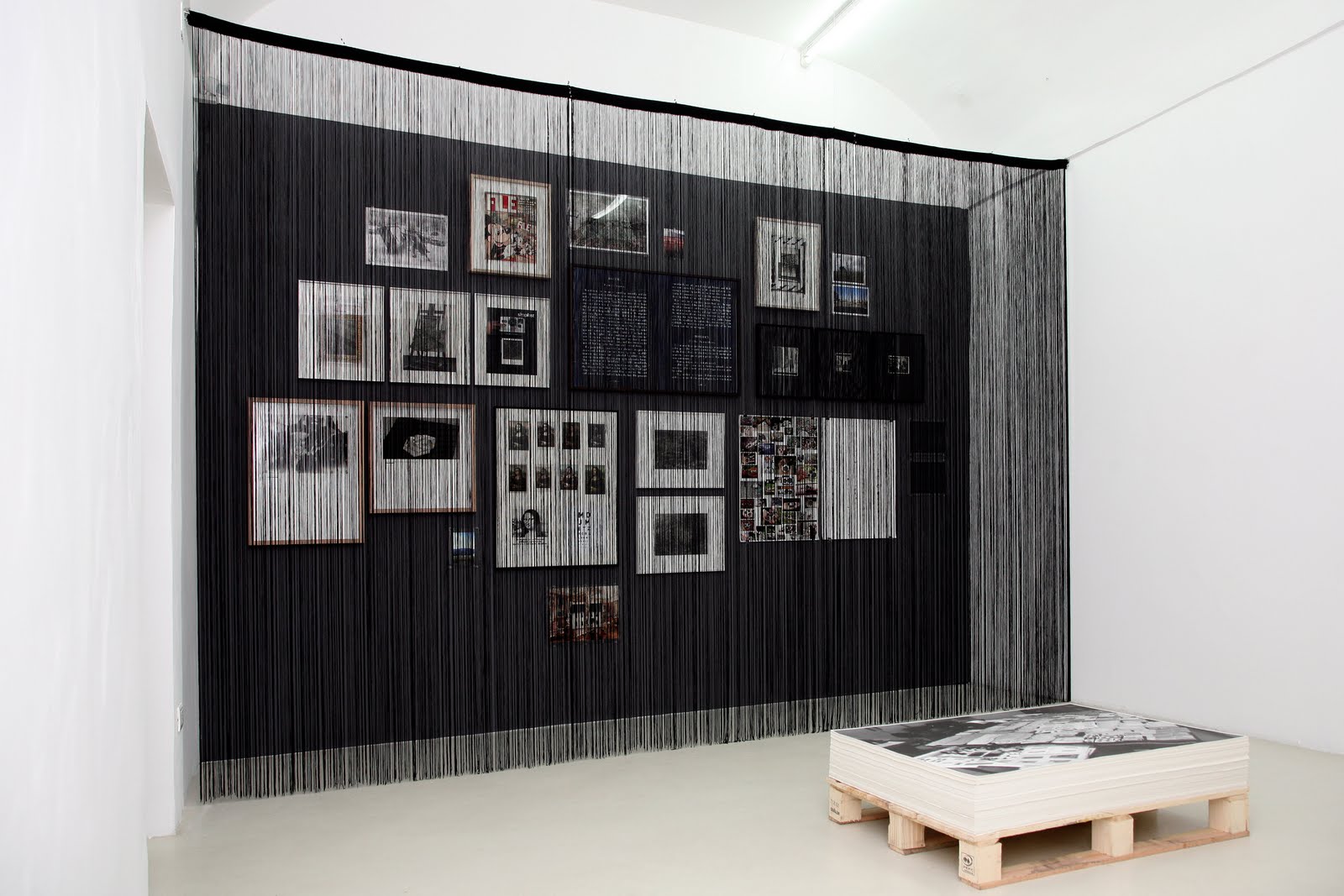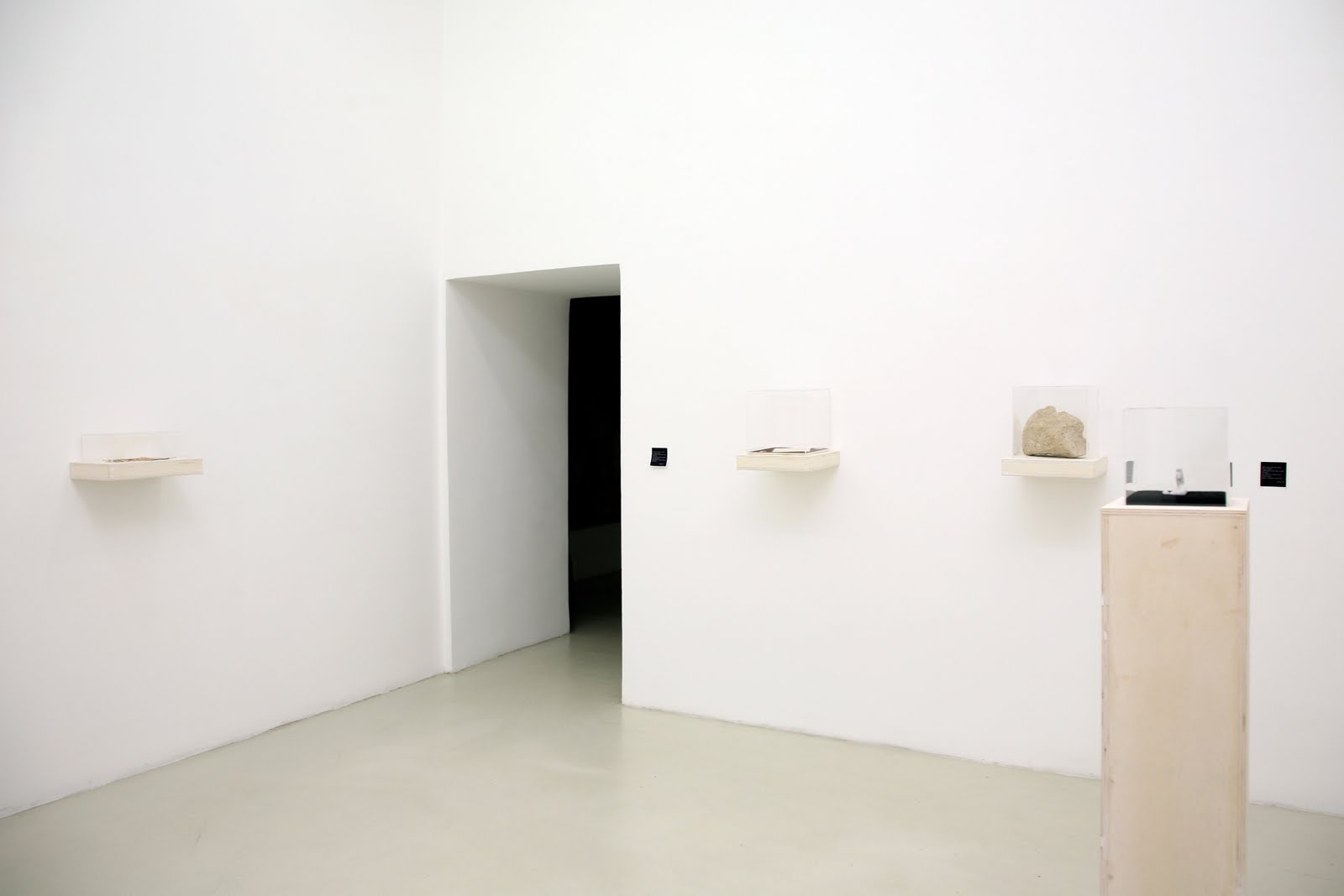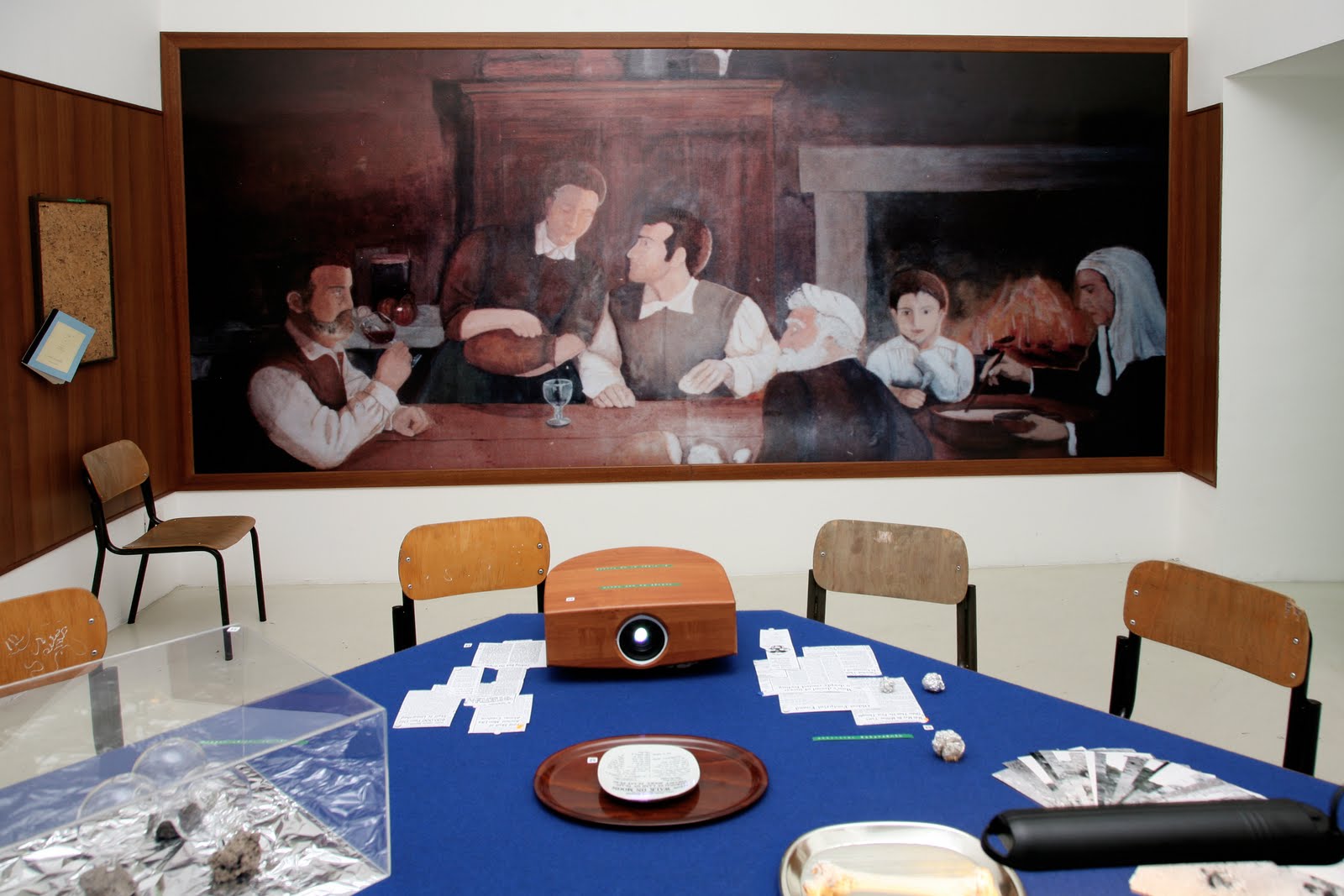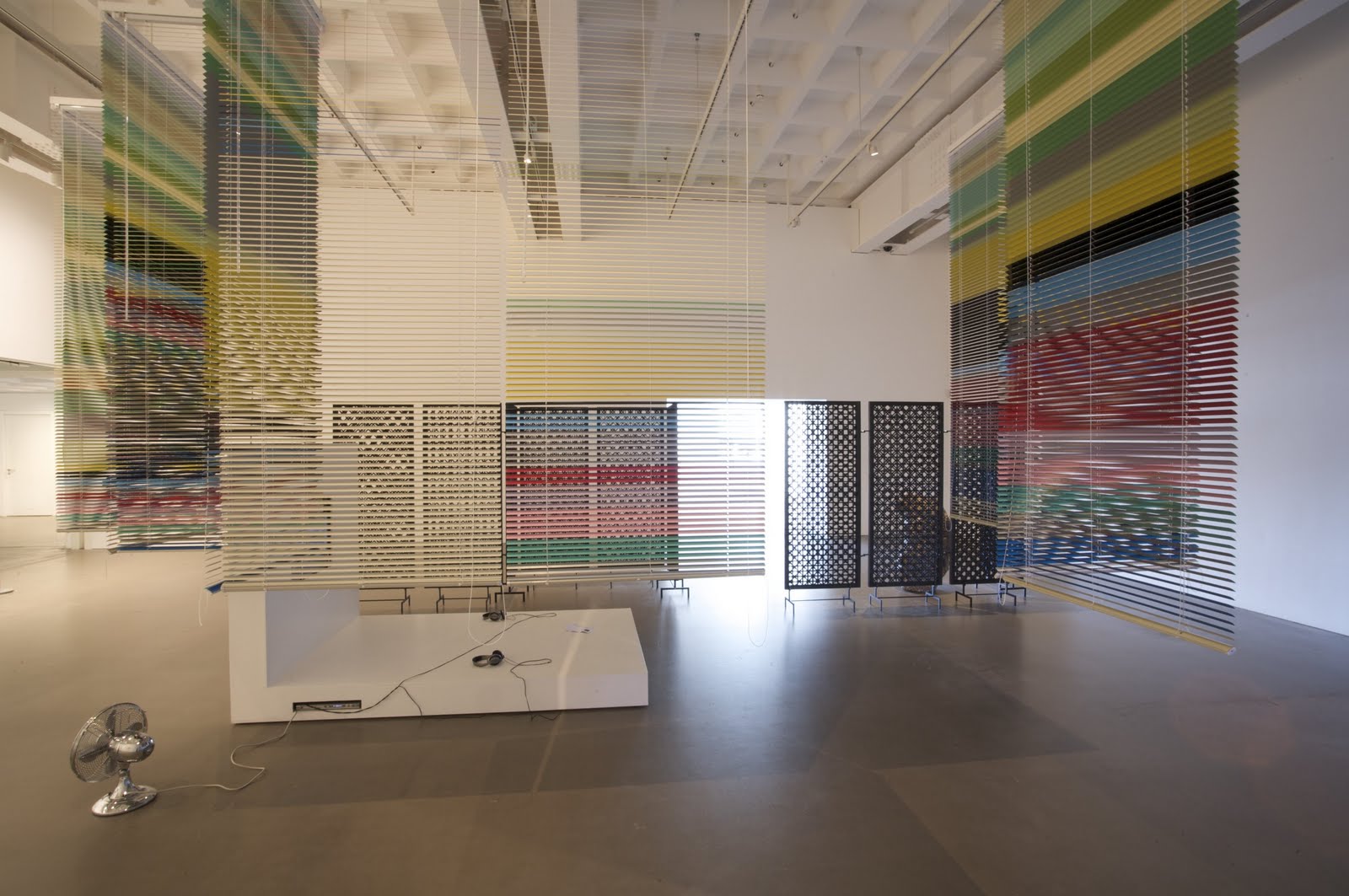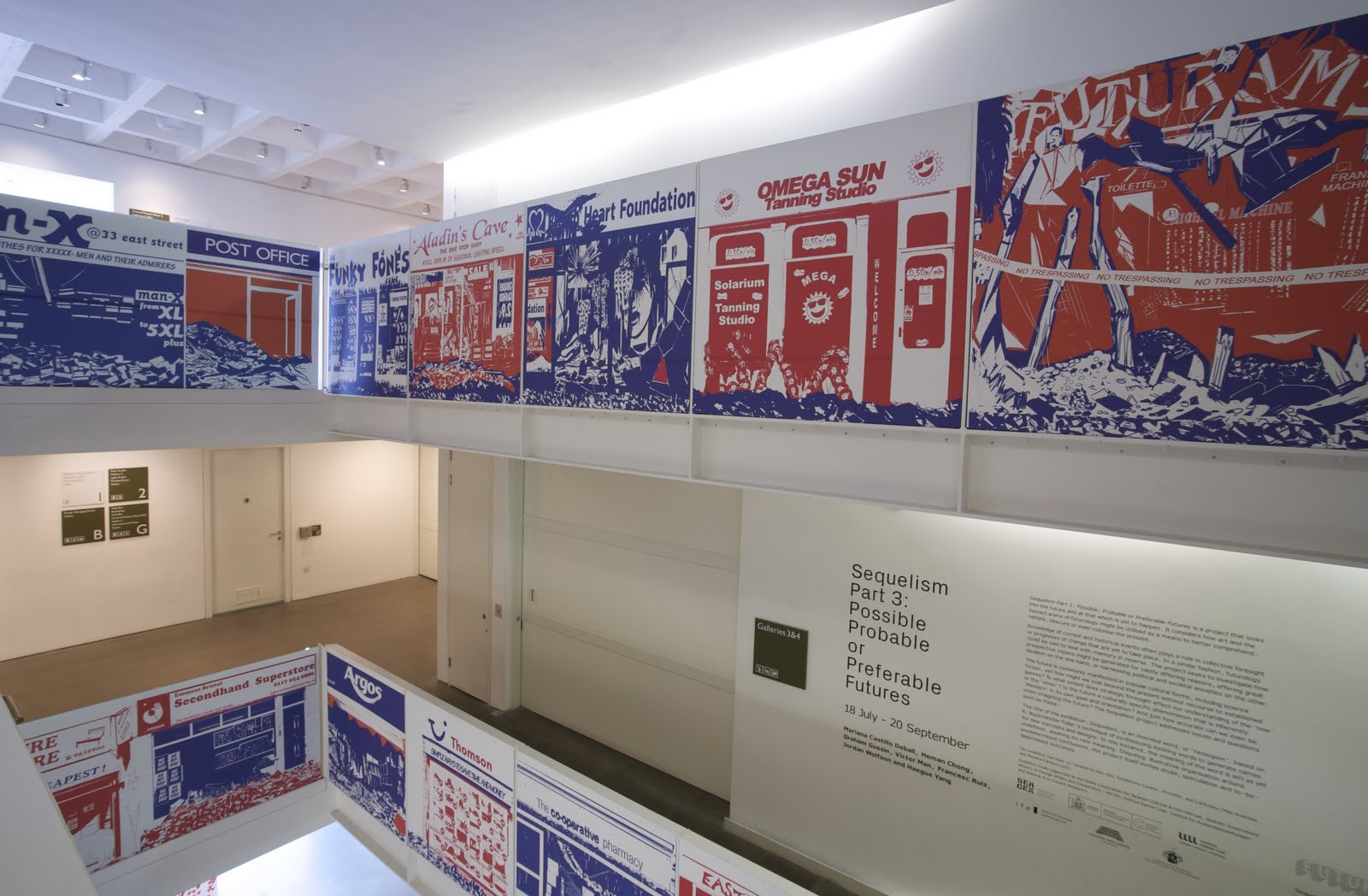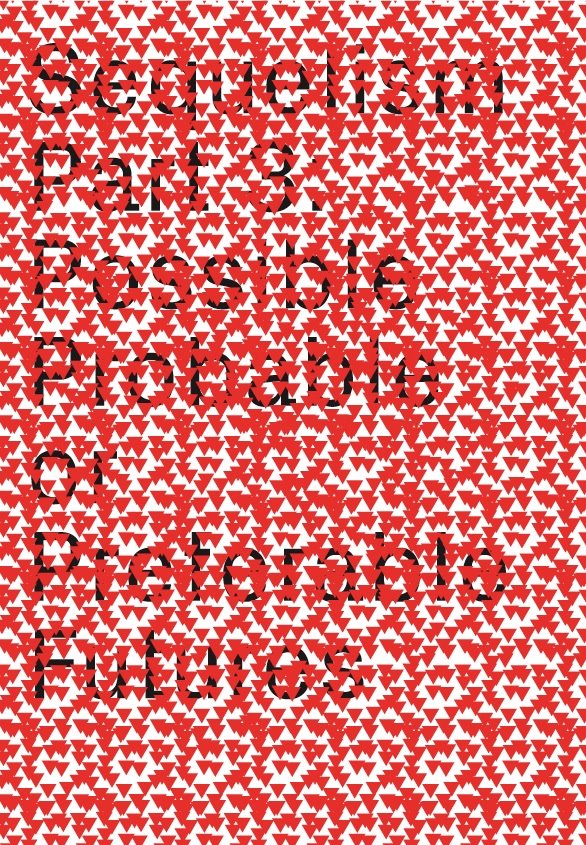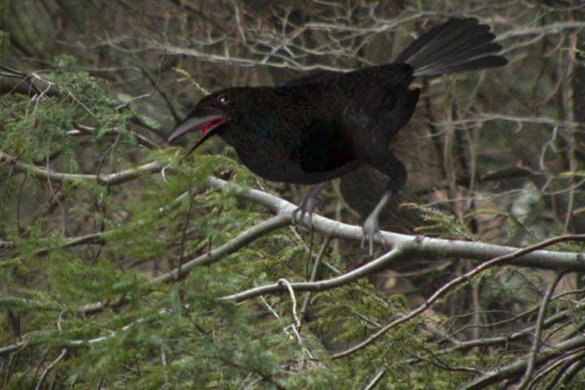2017 in 12 monthly Cover Stories
Fri, Dec 22 2017Another year has gone by!
Revisit some of Latitudes' past–present–future–ongoing projects through our online archive of Monthly Cover Stories, a chance to focus on an artwork, article, event, film, exhibition, excursion or ongoing train of thoughts.
Cover Story – January 2017: "How open are open calls?", 4 January 2017
Cover Story — February 2017: "The Dutch Assembly, five years on", 1 February 2017
Cover Story – March 2017: "Time travel with Jordan Wolfson", 1 March 2017
Cover Story – April 2017: "Banff Geologic Time", 3 April 2017
Cover Story – May 2017: "S is for Shale or Stuart; W is for Waterfall, or Whipps", 1 May 2017
Cover Story – June 2017: "Moth light—Absent Forms", 1 June 2017
Cover Story – July 2017: "4.543 billion", 3 July 2017
Cover Story – August 2017: "Walden 7; or, life in Sant Just Desvern", 1 August 2017
Cover Story – October 2017: "Geologic Time at Stanley Glacier", 11 October 2017
Cover Story—November 2017: "Mining negative monuments: Ângela Ferreira, Stone Free, and The Return of the Earth", 1 November 2017
Cover Story—December 2017: "Tabet’s Tapline trajectory", 4 December 2017
RELATED CONTENT:
Latitudes' Cover Story archive,
Latitudes' writing archive,
Latitudes' newsletters.
2017, 4543 billion, Anna Moreno, Barcelona Producció, CAPC Bordeaux, Charlotte Moth, cover story, curatorial writing, David Mutiloa, Frieze, Jordan Wolfson, report, Stuart Whipps, The Banff Center
Revisit some of Latitudes' past–present–future–ongoing projects through our online archive of Monthly Cover Stories, a chance to focus on an artwork, article, event, film, exhibition, excursion or ongoing train of thoughts.
Cover Story – January 2017: "How open are open calls?", 4 January 2017
Cover Story — February 2017: "The Dutch Assembly, five years on", 1 February 2017
Cover Story – March 2017: "Time travel with Jordan Wolfson", 1 March 2017
Cover Story – April 2017: "Banff Geologic Time", 3 April 2017
Cover Story – May 2017: "S is for Shale or Stuart; W is for Waterfall, or Whipps", 1 May 2017
Cover Story – June 2017: "Moth light—Absent Forms", 1 June 2017
Cover Story – July 2017: "4.543 billion", 3 July 2017
Cover Story – August 2017: "Walden 7; or, life in Sant Just Desvern", 1 August 2017
Cover Story – September 2017: "Dark Disruption. David Mutiloa's 'Synthesis'", 1 September 2017
Cover Story – October 2017: "Geologic Time at Stanley Glacier", 11 October 2017
Cover Story—November 2017: "Mining negative monuments: Ângela Ferreira, Stone Free, and The Return of the Earth", 1 November 2017
Cover Story—December 2017: "Tabet’s Tapline trajectory", 4 December 2017
RELATED CONTENT:
Latitudes' Cover Story archive,
Latitudes' writing archive,
Latitudes' newsletters.
Cover Story – March 2017: Time travel with Jordan Wolfson
Wed, Mar 1 2017
The March 2017 Monthly Cover Story "Time travel with Jordan Wolfson" is now up on www.lttds.org – after March it will be archived here.
"The film that lends its image to this month’s cover story – Jordan Wolfson’s Landscape for Fire, 2007 – was featured in the Latitudes-curated film programme A Stake in the Mud, A Hole in the Reel. Land Art’s Expanded Field 1968–2008, which premiered in April 2008 at the Museo Tamayo, Mexico City, before touring several venues in Spain, Switzerland, the Netherlands and the U.K.
Landscape for Fire responded to a 1972 film of the same name by Anthony McCall in which the British artist, best known for his “solid light” works,
attempted to integrate performance, installation, sculpture and images
in movement. Thirty-five years on, Jordan had re-staged this work of the
past as though it were a ritual, the repetition of which invoked the
almost mystical aura that often surrounds the art of the late 1960s and
early 1970s." Continue reading by clicking the grey bar underneath the image
Cover Stories' are published on a monthly basis on Latitudes' homepage and feature past, present or forthcoming projects, research, writing, artworks, exhibitions, films, objects or field trips related to our curatorial activities, and are archived here.
Related content:
- Archive of Cover Stories since March 2015
- Cover Story, February 2017: The Dutch Assembly, five years on 1 February 2017
- Cover Story, January 2017: How open are open calls? 4 January 2017
- Cover Story, December 2016: Ten years ago – Land, Art: A Cultural Ecology Handbook 5 December 2016
- Cover Story, November 2016: Plucking Gilda, synesthetic Toni and dazzling Víctor 2 November 2016
- Cover Story, October 2016: "A Funny thing Happened on the Way to the Gallery, 13 October 2016
- Cover Story, September 2016: "El misterio de Caviria" by Antoni Hervàs 1 Septiembre 2016
- Last chance to read the August 2016 Monthly Cover Story "Fermínlandia" 31 August 2016.
Participants in the symposium "You're such a curator!" at de Appel Arts Centre, Amsterdam, 23–24 November 2016 and Amsterdam Art Weekend
Mon, Dec 12 2016
Above: de Appel director Niels van Tomme during his welcome speech.
This and following photos: Carina Erdmann/De Appel.

This and following photos: Carina Erdmann/De Appel.
Latitudes participated in de Appel Arts Centre two-day symposium "You are such a curator!" on 23 and 24 November 2016. Coinciding with the Amsterdam Art Weekend,
the event presented lectures, discussions, performances and papers
marking the conclusion of a three-year research project into the
dynamics of de Appel’s curatorial programme and its position in the wider field of curatorial education.
Latitudes' presention "Following the Holy Greyhound" reflected "on the disinterment of a sculpture from 1991 – part of an exhibition by the Venezuelan artist José Antonio Hernández-Díez curated by Latitudes at MACBA, Barcelona, earlier this year – and their approach to a group exhibition in preparation for CAPC Musée d’art contemporain de Bordeaux in 2017. Their point of departure was responding to the question "what
does the wrongful killing of a dog in medieval France have to tell us
about the micro and the macro, the hyper-specific and the universal?"

Above: Chris Sharp during his presentation 'The Willfully Minor Anomaly of Lulu'.
Below: Q+A session.
Above: Presentation by Aneta Rostkowska and Jakub Woynarowski.
Below: Latitudes' presentation "Following the Holy Greyhound".
Above: galerie founders Adriano Wilfert Jensen and Simon Asencio during their presentation.
Below: Attentive (femenine!) audience.
Above: (Intensive) Q+A amongst speakers and audience.
Below: Renata Cervetto during her presentation '(Art) Mediation Projects. In & Out The Museum'.
Above: Kim Nguyen during her presentation 'That's Why We Love the Moon'.
Below: Niels van Tomme during one of the many Q+A's.
Above: Prem Krishnamurthy during a Q+A.
The two-day symposium included contributions by Mira Asriningtyas, Lucrezia Calabrò Visconti, Renata Cervetto, Mateo Chacon-Pino, Galerie (Adriano Wilfert Jensen and Simon Asencio), Natasha Hoare, Kati Ilves, Prem Krishnamurthy, Inga Lace, Latitudes (Max Andrews and Mariana Cánepa Luna), Shona Mei Findlay, Fadwa Naamna, Kim Nguyen, Emma Ines Panza, Aneta Rostkowska and Kuba Woynarowski, Chris Sharp, Niels Van Tomme and Huib Haye van der Werf.
We also visited a few exhibitions and attended a few events programmed for the Art Amsterdam Weekend (24–27 November). One of the highlights was Marinus Boezem's exhibition at Oude Kerk's grand Gothic architecture, one of its finest and oldest examples in Holland. Boezem's pieces resonated with the Gothic style of the church, an architecture that has fascinated him throughout this artistic practice – he has produced several pieces using plans of cathedrals, his most famous one being "Gothic Growing Project" (1978–1987), popularly known as "The Green Cathedral" in a polder landscape near Almere, composed of 178 Italian poplars.
"Progetto Spaziale" (1970/2016) video works, and "Meteorieten" (2016) on the floor.
(above) "Windschaal" (Wind Scale) (1968) projected in the Holy Sepulchre chapel.
Majestic "Labyrinth" (2016) piece above and below.
(above) "New Improvisation with Bart de Kroon", one of the five performances Jeremiah Day presented at Ellen de Bruijne Projects.
Works by Aimée Zito Lema.
(Above and below) Installation on the ground floor by Eva Spierenburg.
Sculptural and archival material by British artist Alex Farrar around his suit.
More work by Eva Spierenburg was presented in a more intimate presentation on the second floor.
Glass piece by German artist Christine Moldrickx (above and below).
Works by Marije Gertenbach.
(Above) Two of the rooms presenting works by Jean Tinguely at Stedelijk Museum.
Jordan Wolfson's "Colored Sculpture" (2016).
kunstverein new location in Hazenstraat 28, presented "Staples", 20 years of work by typographic artist Will Holder.
RELATED CONTENT:
- The story behind José Antonio Hernández-Díez's 'San Guinefort' (1991) 29 March 2016
- David Jablonowski's "Hype Cycle" at Fons Welters, Amsterdam 14 December 2014;
- Report from the Amsterdam Art Weekend, 27–30 November 2014 now on Storify 2 December 2014;
- The Dutch Assembly, ARCOmadrid, 15–19 February 2012.
Simon Fujiwara wins the 2010 Cartier Award
Thu, Jun 3 2010
Frieze Foundation has recently announced the 2010 Cartier Winner: Berlin-based British/Japanese artist Simon Fujiwara (1982). The prize is addressed to artists not living in the UK and covers coproduction costs of up to £10,000, a £1,000 artist’s fee, per diems, travel expenses and a studio residency at Gasworks in London from August to October 2010.
According to the press release "at Frieze Art Fair 2010 Fujiwara plans to present a new site-specific work, Frozen: an installation based on the fictive premise that an ancient lost city has been discovered beneath the site of the fair."

 Installation of 'The Museum of Incest' during the 2009 Frieze. Courtesy of the artist. Photo: Latitudes | www.lttds.org
Installation of 'The Museum of Incest' during the 2009 Frieze. Courtesy of the artist. Photo: Latitudes | www.lttds.org
Fujiwara presented 'The Museum of Incest' during the 2009 Frieze in the newly inaugurated section FRAME (see Latitudes' post here) with Frankfurt–based gallery Galerie Neue Alte Brücke.
Before then, a version of the museum was presented at the Latitudes-curated exhibition 'Provenances' at Umberto di Marino, Naples, during which 'The Incest Museum: A Guided Tour' was published by Archive Books.
 Installation of 'The Museum of Incest', Provenances, Umberto di Marino, Naples (14 May–14 September 2009).
Installation of 'The Museum of Incest', Provenances, Umberto di Marino, Naples (14 May–14 September 2009).
Courtesy of the artist. Photo: Simon Fujiwara
 'The Incest Museum: A Guided Tour' published by Archive Books. Photo: Archive Books
'The Incest Museum: A Guided Tour' published by Archive Books. Photo: Archive Books
Fujiwara will participate in the forthcoming 29th Bienal de Sao Paulo (25 September–12 December 2010), Manifesta 8 in Murcia (2 October 2010-9 January 2011), Performa, the 2011 edition of the New York performance biennial and a solo exhibition at TATE, St.Ives (2011).
The 2009 Cartier Award winner was Jordan Wolfson (New York, 1980) – see Latitudes' post here and an exhibition review by Max Andrews' from Latitudes here) and the 2008 winner was Cuban artist Wilfredo Prieto (1978) (see Latitudes' post here and artist profile here).
Cartier Award, Frieze Art Fair, Galerie Neue Alte Brücke, Jordan Wolfson, latitudes, Max Andrews, Provenances, Simon Fujiwara, The Museum of Incest, Wilfredo Prieto
According to the press release "at Frieze Art Fair 2010 Fujiwara plans to present a new site-specific work, Frozen: an installation based on the fictive premise that an ancient lost city has been discovered beneath the site of the fair."

 Installation of 'The Museum of Incest' during the 2009 Frieze. Courtesy of the artist. Photo: Latitudes | www.lttds.org
Installation of 'The Museum of Incest' during the 2009 Frieze. Courtesy of the artist. Photo: Latitudes | www.lttds.orgFujiwara presented 'The Museum of Incest' during the 2009 Frieze in the newly inaugurated section FRAME (see Latitudes' post here) with Frankfurt–based gallery Galerie Neue Alte Brücke.
Before then, a version of the museum was presented at the Latitudes-curated exhibition 'Provenances' at Umberto di Marino, Naples, during which 'The Incest Museum: A Guided Tour' was published by Archive Books.
 Installation of 'The Museum of Incest', Provenances, Umberto di Marino, Naples (14 May–14 September 2009).
Installation of 'The Museum of Incest', Provenances, Umberto di Marino, Naples (14 May–14 September 2009). Courtesy of the artist. Photo: Simon Fujiwara
 'The Incest Museum: A Guided Tour' published by Archive Books. Photo: Archive Books
'The Incest Museum: A Guided Tour' published by Archive Books. Photo: Archive BooksFujiwara will participate in the forthcoming 29th Bienal de Sao Paulo (25 September–12 December 2010), Manifesta 8 in Murcia (2 October 2010-9 January 2011), Performa, the 2011 edition of the New York performance biennial and a solo exhibition at TATE, St.Ives (2011).
The 2009 Cartier Award winner was Jordan Wolfson (New York, 1980) – see Latitudes' post here and an exhibition review by Max Andrews' from Latitudes here) and the 2008 winner was Cuban artist Wilfredo Prieto (1978) (see Latitudes' post here and artist profile here).
LAST CHANCE: 'Provenances', Umberto di Marino, Naples & 'Sequelism Part 3: Possible, Probable or Preferable Futures', Arnolfini, Bristol, UK
Mon, Sep 7 2009
Jordi Mitjà 'Floating Lines' (2009). Photo: Danilo Donzelli.
Installation view of Erick Beltrán's works: 'Euridice' (ink on gold leaf on oak leaves, text on paper); 'Creusa' (ash from Vesuvius, text on paper); 'Sybil of Cumea' (inscribed tufo stone, text on paper); 'Ildeth' (carved salt from Spiral Jetty, text on paper). All works from 2009. Photo: Danilo Donzelli.
Simon Fujiwara, 'The Museum of Incest', 2008-ongoing, hexagonal table, chairs, projection screen, wood veneer paneling, vinyl mural, map, framed portraits, six framed book pages (“The Incest Museum Cast of Actors”), slide projection loop, Museum orientation video (25 min.), Museum guidebooks, various objects, and artifacts. Photo: Danilo Donzelli.
'Provenances'
Erick Beltrán, Jordi Mitjà and Simon Fujiwara
Umberto di Marino Arte Contemporanea, Naples, Italy
until 14 September 2009
EXHIBITION PHOTO TOUR HERE.
'Provenances' reflects on the heritage industry and the museumification of history, as well as the creation, transmission, and fidelity of cultural worth. The artists share an aesthetic and pragmatic concern with the principle of the personal archive or the pre-museal wunderkammer – the categorization and veracity of objects, images, and words are always provisional. + info...
Erick Beltrán presents four works each focussed around a relic-like artifact made of a particular natural substance. Each object is accompanied by a text diagram, and together they elicit a dense proliferation of references, narratives, contexts, and interconnections. In 'Floating Lines' (2009) Jordi Mitjà reflects on practices of information retrieval, falsification, and accumulation. In his seemingly sparse installation, clusters of photocollages are hidden from immediate view by a string curtain which protects them from light while necessitating the visitor’s gesture to reveal them. Simon Fujiwara's 'The Museum of Incest' (2009) is a multipart project that unearths an implicit myth of human origins and an explicit sexual archeology. Fujiwara realised the performance-lecture 'The Museum of Incest. A Guided Tour' during the opening night.
A guide of the museum has been published by Archive Books (Softcover / 21 x 15cm / 52pp / ISBN 978-88-95702-09-4).
Press links here.
UMBERTO DI MARINO
Via Alabardieri 1, Piazza dei Martiri
80121 Napoli, ITALIA
Opening hours: Mon-Sat 15–20h
Opening hours: Mon-Sat 15–20h
'Provenances' has been kindly supported by the Institut Ramon Llull.
(Above and below) Haegue Yang, 'Holiday for Tomorrow', 2007. Painted wooden screens with metal feet (Yes-I-Know-Screen); PVC, shells (Shell Sculpture); 10 coloured Venetian blinds, steel cable (Blind Department); wooden platform with monitor showing 13 min DVD (Holiday Story). Courtesy of the artist and Barbara Wien, Berlin. Photo: Carl Newland.
Arnolfini, Bristol, United Kingdom
until 20 September 2009
Free admission
EXHIBITION PHOTO TOUR HERE.
Artists: Mariana Castillo Deball (1975, Mexico City. Lives in Berlin/Amsterdam), Heman Chong (1977, Malaysia. Lives in Berlin/Singapore), Graham Gussin (1960, London. Lives in London), Victor Man (1974, Cluj–Napoca. Lives in Cluj), Francesc Ruiz (1971 Barcelona. Lives in Barcelona/Berlin), Jordan Wolfson (1980, New York. Lives New York/Berlin) and Haegue Yang (1977, Malaysia. Lives in Berlin/Singapore), (1971 Seoul. Lives in Berlin/Seoul)
Curated by: Nav Haq (Curator, Arnolfini) and Latitudes
'Sequelism...' is an exhibition reflecting on the future and that which is yet to happen. It looks at the political, social, and ecological implications of the inexact arena of futurology: the science and interdisciplinary practice of postulating possible, probable, and preferable futures from the present. This is the first in a trilogy of Sequelism exhibitions, with Part 2 in 2010. + info...
More on the public programme related to the exhibition on http://futurologyprogramme.org
Arnolfini 16 Narrow Quay
Bristol BS1 4QA
UNITED KINGDOM
Opens: 10am-6pm Tues-Sun & Bank Holiday Mondays. Closed Mondays. Free entrance
'Sequelism' is generously supported by the Institut Ramon Llull and the Sociedad Estatal para la Acción Cultural en el Exterior (SEACEX), IFA, the National Arts Council Singapore and The Ratiu Family.
2024 update: Images of Victor Man's works have been removed at the request of the artist.
Installation shots of 'Sequelism...', Arnolfini, Bristol on Latitudes' website
Tue, Jul 21 2009Francesc Ruiz 'Untitled' (Bristol) 2009. Photos: Latitudes | www.lttds.org
We have uploaded a slideshow with installation shots (CLICK HERE) of the recently inaugurated exhibition 'Sequelism Part 3: Possible, Probable, or Preferable Futures' on view at Arnolfini, Bristol until 20 September 2009.
'Sequelism, Part 3: Possible, Probable or Preferable Futures' is an exhibition project that looks into the future and at that which is yet to happen. It considers how the inexact arena of futurology is used as a means to better comprehend the present and the past.
'Sequelism Part 3' includes works by Mariana Castillo Deball (1975, Mexico City. Lives in Berlin/Amsterdam), Heman Chong (1977, Malaysia. Lives in Berlin/Singapore), Graham Gussin (1960, London. Lives in London), Victor Man (1974, Cluj–Napoca. Lives in Cluj–Napoca), Francesc Ruiz (in residency) (1971 Barcelona. Lives in Barcelona/Berlin), Jordan Wolfson (1980, New York. Lives New York/Berlin) and Haegue Yang (1971 Seoul. Lives in Berlin/Seoul).
Haegue Yang, 'Holiday for Tomorrow', 2007. Photos: Latitudes | www.lttds.org
Taking the style of a magical realist tale or children's story, Mariana Castillo Deball's 'Nobody Was Tomorrow' (2007) consists of three interconnected stories based on the fictional connections between three real ‘characters’ – ‘Nobody’ a defunct accelerating aging machine, a sprawling fig tree and the remains of a Roman bath in Čačak, Serbia. Castillo Deball makes us mindful of culture’s fortunes through a swirling fable about the sedimentation of time, encapsulated by an image of a damaged book.
'Index (Down)' (2009) is part of Heman Chong's ongoing series ‘Surfacing’, which requires the action of putting up 3000 stickers on a wall within a given set of instructions. The red triangular stickers are intended to resemble the downward pointing arrows used to denote a fall in value of stock exchanges. Considering the paranoia around the scenario of economic freefall, Index (Down) uses this motif to create an abstract pattern evoking a waterfall.
Graham Gussin's 'Hypnotic/Dystopic/Optic' (2009) presents a ‘horizon line’ of rotating record covers for soundtracks to renowned dystopian science fiction films. The covers are set to rotate at the speed at which their images ‘vaporise’ at the limit of visual comprehension. 'In The Not Too Distant Future (Self Portrait with Sleeping Masks)' (2009) is a self-portrait of the artist inspired by a scene from the film La Jetée (1962) concerning an experiment in time travel following a nuclear war.
Francesc Ruiz's stair barriers installation 'Untitled (Bristol)' (2009) takes the shop windows of the high streets in the south of Bristol – East Street and North Street – as sequential units akin to comic-book vignettes. Ruiz has created a narrative around a dystopian future in which destruction, revolt, and anger have invaded the city after an economic downturn.
Jordan Wolfson 'Untitled' (2007) centres on a 1984 Macintosh 128k, the first affordable home computer to use a mouse-driven graphical user interface. The computer is seen stranded by the side of a road in Connecticut, built in the late 1930s following the Great Depression. The soundtrack comprises a triumphalist monologue concerning the emergence of American abstract painting in the 1950s. Wolfson is interested in obsolescence and in these elements as generational touchstones.
Victor Man's three pieces could be read in terms of premonition and symbolic rites which relate to the uncertainty of the future in a similar way that memory relates to the past. A taxidermy fox head is wedged within a metal structure as if a votive or magical offering. Vinyl text on a wall is negated by a neon ‘X’. A ceramic funerary plate bears the image of stars, whose arrangement has often been interpreted by man in terms of fate and fortune.
Haegue Yang's 'Holiday for Tomorrow' (2007) considers our perception of time, and the emotional anticipation of holidays, those socially-agreed days in which labour is suspended and we attempt to rest our bodies and minds. At its centre is a video essay showing Seoul during the Korean harvest holiday Chuseok over which a female voice reflects on the postponement of desire and the dysfunctional hopes triggered by enforced leisure.
Accompanying events and film programme here.
Exhibition curated by Nav Haq (Curator, Arnolfini) and Latitudes.
Supported by the State Corporation for Spanish Cultural Action Abroad (SEACEX), the Direction of Cultural and Scientific Relations of the Spanish Ministry of Foreign Affairs, Institut Ramon Llull, IFA, National Arts Council, Singapore and The Ratiu Family Foundation.
SAVE THE DATE: Friday 17 July opening of 'Sequelism Part 3. Possible, Probable or Preferable Futures', Arnolfini, Bristol
Mon, Jul 6 2009
Invitation design to the exhibition with work by Heman Chong.
'Sequelism Part 3: Possible, Probable or Preferable Futures' (18 July–20 September 2009)
Preview: Friday 17 July, 6–8pm
Venue: Arnolfini, Bristol, UK
Venue: Arnolfini, Bristol, UK
Artists: Mariana Castillo Deball (1975, Mexico City. Lives in Berlin/Amsterdam), Heman Chong (1977, Malaysia. Lives in Berlin/Singapore), Graham Gussin (1960, London. Lives in London), Victor Man (1974, Cluj–Napoca. Lives in Cluj–Napoca), Francesc Ruiz (in residency) (1971 Barcelona. Lives in Barcelona/Berlin), Jordan Wolfson (1980, New York. Lives New York/Berlin) and Haegue Yang (1971 Seoul. Lives in Berlin/Seoul)
Co-curated by Arnolfini and Latitudes
'Sequelism Part 3: Possible, Probable or Preferable Futures' is a project that looks into the future and at that which is yet to happen. It considers how art and the inexact arena of futurology might be utilised as a means to better comprehend, rethink, obscure, or even colonise the present. Knowledge of current and historical events often plays a role in collective foresight or prognoses of change that is yet to take place. In a similar fashion, futurology could be said to deal with memory in reverse. The project seeks to investigate how prospective visions might be generated for vastly differing reasons, offering great idealism on the one hand, or harnessing political and societal anxiety on the other.
The future is commonly manifested in popular cultural forms, including science fiction, yet how might we look beyond the present without recourse to established genres? To what extent does strategic foresight affect our understanding of the ‘now’ or the ‘when’? Is the future a culturally specific phenomenon that is inherently ‘Western’ in its own gaze and orientation? And just how accurate can we be when imagining the future? The Sequelism project addresses issues and questions such as these. Disputing illustrative organisation around a predetermined thesis, the project itself invites doubt, speculation, and to-be-determined outcomes.
This is the first in a trilogy of Sequelism exhibitions, with Part 2 in 2010.
More information: http://futurologyprogramme.org
Events and screenings
Neil Cummings and Marysia Lewandowska
Museum Futures: Distributed
Screening/Discussion, Saturday 18 July, 2pm, Free
Neil Cummings and Marysia Lewandowska’s film 'Museum Futures: Distributed (2008) is a machinima record of the centenary interview with Moderna Museet’s executive Ayan
Lindquist in June 2058. It explores a possible genealogy for contemporary art practice and its institutions, by reimagining the role of artists, museums, galleries, markets, ‘manufactories’ and academies. The screening will also incorporate a discussion led by Neil Cummings and the curators of the Sequelism exhibition, discussing the future of art institutions.
The Futurological Congress
Sequelism Artists’ Screening Programme
Screening, Friday 21 August, 7.30pm, £3/£2 concs
A programme of artists’ videos selected by the curators of Sequelism to accompany the exhibition, including works by Marjolijn Dijkman, Jordan Wolfson and Julia Meltzer & David
Thorne. Introduced by Nav Haq, Exhibitions Curator, Arnolfini.
David Maljkovic
'Scene for a New Heritage Trilogy Screening'
Thursday 17 September, 6.30pm, Free
The films in David Maljkovic’s renowned 'Scene for a New Heritage Trilogy' (2004–6) are set between 2045 and 2071, visualising different encounters with a communist monument at the memorial park at Petrova Gora, Croatia, and speculating on how the meanings of history and monuments change over time.
Roy Ascott
Art and Technoetic Evolution: when the Mind outgrows the Body
Artist’s talk, Saturday 19 September, 2pm, Free
Artist and theorist Roy Ascott gives a presentation on the recent ideas informing his Technoetics art practice, that has grown out of his long-term research into cybernetic and ‘telematic’ art.
Will Holder
Neologisms Workshop
Workshop, September, date TBC, Free
Booking required, call 0117 917 2300 / 01
A language workshop for young people led by the designer, writer, and editor Will Holder for constructing brand new words or ‘neologisms’, inspired by R. Buckminster Fuller’s technique for synthesizing existing words to generate names for new concepts and designs.
–
Arnolfini
16 Narrow Quay
Bristol BS1 4QA, UK
www.arnolfini.org.uk
Opens: 10am-6pm Tues-Sun & Bank Holiday Mondays | Closed Mondays | Free entrance
Sequelism is possible thanks to the generous support of the State Corporations for Spanish Cultural Action Abroad (SEACEX), the Direction of Cultural and Scientific Relations of the Spanish Ministry of Foreign Affairs, Institute Ramon Llull, The National Arts Council Singapore and IFA.
Co-curated by Arnolfini and Latitudes
'Sequelism Part 3: Possible, Probable or Preferable Futures' is a project that looks into the future and at that which is yet to happen. It considers how art and the inexact arena of futurology might be utilised as a means to better comprehend, rethink, obscure, or even colonise the present. Knowledge of current and historical events often plays a role in collective foresight or prognoses of change that is yet to take place. In a similar fashion, futurology could be said to deal with memory in reverse. The project seeks to investigate how prospective visions might be generated for vastly differing reasons, offering great idealism on the one hand, or harnessing political and societal anxiety on the other.
The future is commonly manifested in popular cultural forms, including science fiction, yet how might we look beyond the present without recourse to established genres? To what extent does strategic foresight affect our understanding of the ‘now’ or the ‘when’? Is the future a culturally specific phenomenon that is inherently ‘Western’ in its own gaze and orientation? And just how accurate can we be when imagining the future? The Sequelism project addresses issues and questions such as these. Disputing illustrative organisation around a predetermined thesis, the project itself invites doubt, speculation, and to-be-determined outcomes.
This is the first in a trilogy of Sequelism exhibitions, with Part 2 in 2010.
More information: http://futurologyprogramme.org
Events and screenings
Neil Cummings and Marysia Lewandowska
Museum Futures: Distributed
Screening/Discussion, Saturday 18 July, 2pm, Free
Neil Cummings and Marysia Lewandowska’s film 'Museum Futures: Distributed (2008) is a machinima record of the centenary interview with Moderna Museet’s executive Ayan
Lindquist in June 2058. It explores a possible genealogy for contemporary art practice and its institutions, by reimagining the role of artists, museums, galleries, markets, ‘manufactories’ and academies. The screening will also incorporate a discussion led by Neil Cummings and the curators of the Sequelism exhibition, discussing the future of art institutions.
The Futurological Congress
Sequelism Artists’ Screening Programme
Screening, Friday 21 August, 7.30pm, £3/£2 concs
A programme of artists’ videos selected by the curators of Sequelism to accompany the exhibition, including works by Marjolijn Dijkman, Jordan Wolfson and Julia Meltzer & David
Thorne. Introduced by Nav Haq, Exhibitions Curator, Arnolfini.
David Maljkovic
'Scene for a New Heritage Trilogy Screening'
Thursday 17 September, 6.30pm, Free
The films in David Maljkovic’s renowned 'Scene for a New Heritage Trilogy' (2004–6) are set between 2045 and 2071, visualising different encounters with a communist monument at the memorial park at Petrova Gora, Croatia, and speculating on how the meanings of history and monuments change over time.
Roy Ascott
Art and Technoetic Evolution: when the Mind outgrows the Body
Artist’s talk, Saturday 19 September, 2pm, Free
Artist and theorist Roy Ascott gives a presentation on the recent ideas informing his Technoetics art practice, that has grown out of his long-term research into cybernetic and ‘telematic’ art.
Will Holder
Neologisms Workshop
Workshop, September, date TBC, Free
Booking required, call 0117 917 2300 / 01
A language workshop for young people led by the designer, writer, and editor Will Holder for constructing brand new words or ‘neologisms’, inspired by R. Buckminster Fuller’s technique for synthesizing existing words to generate names for new concepts and designs.
–
Arnolfini
16 Narrow Quay
Bristol BS1 4QA, UK
www.arnolfini.org.uk
Opens: 10am-6pm Tues-Sun & Bank Holiday Mondays | Closed Mondays | Free entrance
Sequelism is possible thanks to the generous support of the State Corporations for Spanish Cultural Action Abroad (SEACEX), the Direction of Cultural and Scientific Relations of the Spanish Ministry of Foreign Affairs, Institute Ramon Llull, The National Arts Council Singapore and IFA.
2009 Cartier Award winner: Jordan Wolfson
Fri, May 15 2009Frieze has announced the 2009 Cartier Award winner: New Yorker Jordan Wolfson (New York, 1980. Lives in New York and Berlin). The 2008 winner was Cuban artist Wilfredo Prieto, see Latitudes' post here and artist profile here).
In 2006 Latitudes collaborated with Wolfson in the production of the sound piece 'Day' (2006) for an exhibition in Barcelona. In 2008 his film 'Landscape for Fire' was exhibited in different venues as part of the touring film programme 'A Stake in the Mud, a Hole in the Reel. Land Art's Expanded Field 1968–2008' (Museo Tamayo, Mexico City and other venues, April–October 2008) and will soon present the film 'Untitled (the nothing)' (2005–9, 4mins) as part of the cinema, performance and lectures programme 'The Uncertainty Principle' at Capella MACBA.
Read more about Jordan Wolfson: download a 2006 interview in the writing archive and a May 2005 exhibition review in Frieze Magazine here.
[Image: Jordan Wolfson, still of 'Perfect Lover' (2007). Courtesy of the artist, Johann König, Berlin, and T293, Napoli]
'DAY' by Jordan Wolfson
Thu, Nov 2 2006 Here's an interview with Jordan Wolfson, in which he talks about DAY, the piece Latitudes' presented as part of the exhibition 'Alrededor de todos juntos, una entre tantas' at ProjecteSD, Barcelona, 8 June–4 August 2006.
Here's an interview with Jordan Wolfson, in which he talks about DAY, the piece Latitudes' presented as part of the exhibition 'Alrededor de todos juntos, una entre tantas' at ProjecteSD, Barcelona, 8 June–4 August 2006.













































